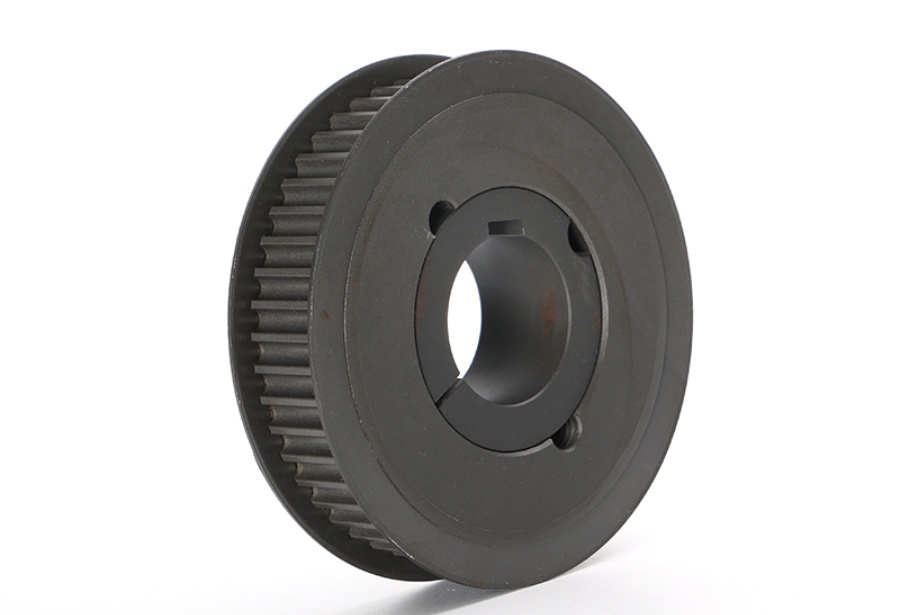
What are the unique advantages of tapered hole synchronous pulleys compared to other types of synchronous pulleys (such as round hole and D-shaped hole)?
Publish Time: 2024-07-16
Compared with other types of synchronous pulleys (such as round holes and D-shaped holes), tapered hole synchronous pulleys have some unique advantages, which are mainly reflected in the following aspects: 1. Adaptability and installation convenienceHigher adaptability: The design of tapered hole synchronous pulleys enables them to better adapt to shafts of different diameters, especially when the shaft spacing needs to be adjusted or shafts of different diameters need to be replaced. This flexibility allows tapered hole synchronous pulleys to be used in a variety of transmission systems, improving their versatility and adaptability.Convenient installation and removal: The tapered hole design makes the installation and removal process of synchronous pulleys easier. By adjusting the tightness of the tapered hole and the shaft, the positioning and fixing of the synchronous pulley can be easily achieved, and it is also convenient for subsequent maintenance and replacement.
1. Adaptability and installation convenienceHigher adaptability: The design of tapered hole synchronous pulleys enables them to better adapt to shafts of different diameters, especially when the shaft spacing needs to be adjusted or shafts of different diameters need to be replaced. This flexibility allows tapered hole synchronous pulleys to be used in a variety of transmission systems, improving their versatility and adaptability.Convenient installation and removal: The tapered hole design makes the installation and removal process of synchronous pulleys easier. By adjusting the tightness of the tapered hole and the shaft, the positioning and fixing of the synchronous pulley can be easily achieved, and it is also convenient for subsequent maintenance and replacement. 2. Transmission performance and stabilityEnhanced transmission stability: The close fit between the tapered hole synchronous pulley and the shaft helps to reduce vibration and noise during the transmission process and improve the stability and reliability of the transmission. This stability is particularly important for equipment that requires high-precision transmission.Improved transmission efficiency: Since the tapered hole design can reduce energy loss during transmission, tapered hole synchronous pulleys may have higher transmission efficiency than other types of synchronous pulleys. However, this needs to be verified by specific product testing, because transmission efficiency is also affected by many factors.
2. Transmission performance and stabilityEnhanced transmission stability: The close fit between the tapered hole synchronous pulley and the shaft helps to reduce vibration and noise during the transmission process and improve the stability and reliability of the transmission. This stability is particularly important for equipment that requires high-precision transmission.Improved transmission efficiency: Since the tapered hole design can reduce energy loss during transmission, tapered hole synchronous pulleys may have higher transmission efficiency than other types of synchronous pulleys. However, this needs to be verified by specific product testing, because transmission efficiency is also affected by many factors. 3. Structural strength and durabilityEnhanced structural strength: The tapered hole design may increase the structural strength of the synchronous pulley to a certain extent, enabling it to withstand greater torque and load. This strength improvement helps to extend the service life of the synchronous pulley and improve its reliability in harsh working environments.Wear resistance and corrosion resistance: Although the tapered hole design itself does not directly improve the wear resistance and corrosion resistance of the synchronous pulley, manufacturers may use special materials or surface treatment processes to enhance these properties. Therefore, when selecting a tapered hole synchronous pulley, you can pay attention to information such as its material composition and surface treatment process.4. Cost considerationsCost-effectiveness: Although the tapered hole synchronous pulley may require more complex processes and higher costs in manufacturing, its adaptability and transmission performance advantages may make it a more cost-effective choice in some applications. However, the specific cost needs to be determined based on factors such as product specifications, brand and production batch.In summary, compared with other types of synchronous pulleys, tapered hole synchronous pulleys have advantages such as higher adaptability, convenient installation and disassembly, enhanced transmission stability and structural strength. However, when selecting synchronous pulleys, it is also necessary to comprehensively consider factors such as specific application requirements, cost-effectiveness and product quality.
3. Structural strength and durabilityEnhanced structural strength: The tapered hole design may increase the structural strength of the synchronous pulley to a certain extent, enabling it to withstand greater torque and load. This strength improvement helps to extend the service life of the synchronous pulley and improve its reliability in harsh working environments.Wear resistance and corrosion resistance: Although the tapered hole design itself does not directly improve the wear resistance and corrosion resistance of the synchronous pulley, manufacturers may use special materials or surface treatment processes to enhance these properties. Therefore, when selecting a tapered hole synchronous pulley, you can pay attention to information such as its material composition and surface treatment process.4. Cost considerationsCost-effectiveness: Although the tapered hole synchronous pulley may require more complex processes and higher costs in manufacturing, its adaptability and transmission performance advantages may make it a more cost-effective choice in some applications. However, the specific cost needs to be determined based on factors such as product specifications, brand and production batch.In summary, compared with other types of synchronous pulleys, tapered hole synchronous pulleys have advantages such as higher adaptability, convenient installation and disassembly, enhanced transmission stability and structural strength. However, when selecting synchronous pulleys, it is also necessary to comprehensively consider factors such as specific application requirements, cost-effectiveness and product quality.



